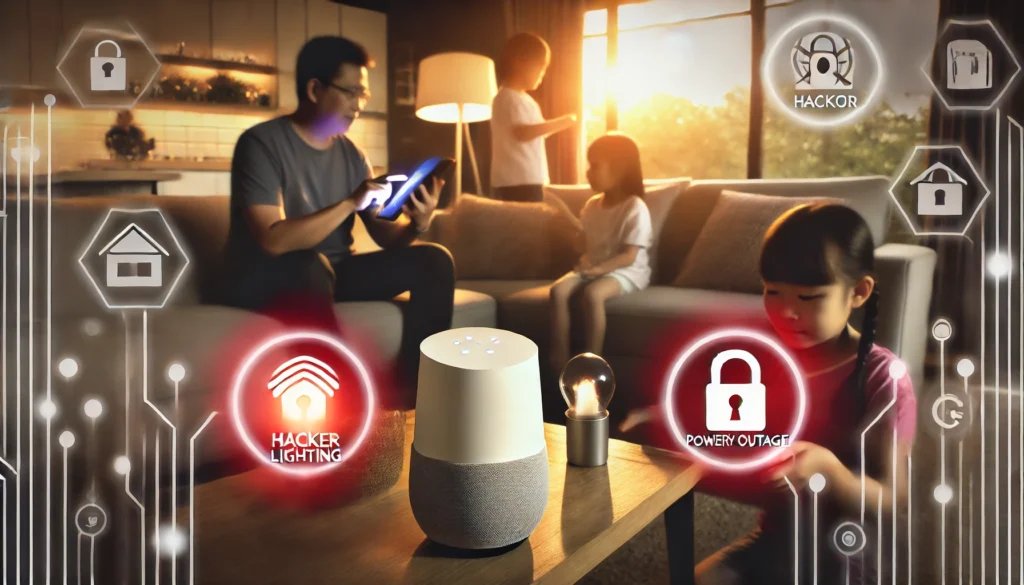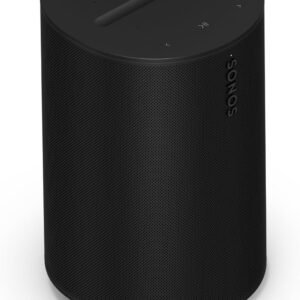In the ever-evolving realm of technology, “Understanding the Equilibrium: Balancing the Benefits and Drawbacks of Smart Home Technology” paves the way for a candid exploration of the advantages and pitfalls associated with smart home technology. Step into a journey that deciphers the pros and cons of making your home “smart”, illuminating the potential for convenience, efficiency, and automation, while concurrently acknowledging concerns about privacy, security, and reliance on these cutting-edge conveniences. This insightful excursion provides an impartial viewpoint, empowering you to make informed decisions about embracing this facet of modern living.
The Emergence of Smart Home Technology
As we journey together through the exciting world of technology, let’s start by taking a brief trip down memory lane.
The progression of technology over the years
From the invention of wheel to the evolution of the internet, humanity has made tremendous technological strides. Over the years, you’ve witnessed the transformative power of technology in various aspects of life. Everything from your travel arrangements to the way you communicate has been revolutionized. This unprecedented leap is what has given birth to the concept of ‘Smart Home Technology.
The advent of smart home systems
Smart home systems are a relatively recent development that brings automation and connectivity into your day-to-day domestic life. They leverage technological advancement to provide you with seamless control over various household functions and appliances. This flourishing journey began in the late 20th century, and since then, the industry has opened up a world of unimaginable possibilities.
Current market trends in smart home technology
As of today, smart home technology is experiencing spectacular growth in the global market. Owing to the COVID-19 pandemic, more people are spending time within the four walls of their homes than ever before. This has catalyzed a shift in focus towards building smarter and more efficient homes. From smart lights and security systems to automatic climate control and remote controlled appliances, the market is steadily expanding and diversifying.
Defining Smart Home Technology
Now that we have familiarized ourselves with its emergence, let’s delve deeper into understanding what smart home technology entails.
Conceptual understanding of smart homes
Smart homes bring together a series of interconnected devices and systems that are controlled through a central hub – often your smartphone or a dedicated device. In essence, they transform your living spaces into intelligent environments that respond to your needs and actions.
Key components of smart home systems
A typical smart home system consists of smart devices that communicate with each other, a home automation hub to control these devices, and a network to connect them all. These components work in tandem to give you unprecedented control over your home, enabling you to operate various devices remotely, monitor in-house activities, and automate routine tasks.
Different types of smart home technology
As smart home technology evolves through time, it has diversified into numerous applications. These encompass simple automated tasks, like scheduling coffee machines or washing machines, to more complex systems, such as state-of-the-art security alarms and surveillance systems. The different types essentially aim to make any device that consumes electricity smart by either modifying them or enhancing them with smart features.

The Benefits of Smart Home Technology
The growth of any technology is fundamentally driven by the benefits it provides; and smart home technology is no exception.
Increased convenience and comfort
Perhaps the most expressive advantage you’d enjoy with smart home technology is the sheer convenience and comfort it brings to your day-to-day life. It offers a multitude of automated services, right from controlling lighting and temperature to managing your entire home entertainment system, all from your fingertips.
Enhanced security and safety
Smart home systems significantly enhance the security and safety of your home. Advanced door locks, surveillance cameras, and alarm systems can be controlled remotely, allowing you to keep an eye on your property regardless of your location. This promises a peace of mind that traditional security measures simply cannot offer.
Energy efficiency and environmental impact
An often-underestimated benefit of smart homes is their potential to save energy. Sensors, timers and automation in smart homes can optimize the usage of appliances, which in turn conserves energy and reduces carbon emissions.
Potential financial savings
While the initial investment may seem substantial, the longer term benefits of energy savings and reduced utility bills can contribute to potential financial savings in the long-run.
The Downside of Smart Home Technology
While the advantages are definitely enticing, it’s important to delve into the potential downsides before you embark on the journey of converting your home into a smart one.
Privacy and data security concerns
Having a smart home means allowing technology to listen, record, and learn from your daily routine. This could potentially lead to invasion of privacy and misuse of personal data.
High installation and maintenance costs
Setting up a smart home often comes with high initial costs, as well as potential maintenance expenses. If you’re considering a smart home setup, you might need to prepare for a substantial investment.
Reliability and technical glitches
Like all technology, smart homes are not immune to technical glitches. Devices can malfunction, systems can crash, and integrations can fail, causing potential inconvenience.
Dependence on internet connection
Most smart home devices rely heavily on a stable internet connection. If you don’t have a reliable or strong internet network, you might frequently find yourself at the frustrating end of a non-responsive smart device.

Consumer Perception towards Smart Home Technology
The future of smart home technology largely depends on how you and other consumers perceive it.
Understanding the market sentiment
While the concept of smart homes is appealing to many, there is still a considerable amount of apprehension amongst consumers. This can generally be attributed to the potential downsides like privacy concerns and the cost of setting up smart homes.
Adoption rate and consumer preferences
Despite the mixed sentiments, the adoption rate for smart home technology is steadily on the rise. More millennials and tech-savvy individuals are advocating for smart homes and their potential to create an efficient ecosystem.
Challenges to wider acceptance
Consumer perception towards the technology is improving, yet there are challenges that prevent its wider acceptance, like the need for consumer education and awareness about the potential benefits and downsides.
Impact of Smart Home Technology on Lifestyle
Smart home technology is not only about controlling devices; it’s about reshaping the way you live.
Transformation of daily routines
Smart home technology offers the opportunity to automate and optimize your everyday tasks at home. It can personalize your morning routines, create perfect environments for different activities and moods, and provide adaptive security throughout the day and night.
Addressing special needs and aging population
Smart homes offer tremendous potential for improving the quality of life for people with special needs and the aging population. Whether it’s assistance with daily chores, keeping track of health, or automatically alerting for emergencies, smart homes can offer significant support.
Influence on social behaviour
With tech enhanced living becoming normative, smart homes are influencing social behaviours as well. The way you entertain guests, enjoy your leisure time, or manage your work from home can all be distinct in a smart home.
The Role of Manufacturers and Service Providers
As the primary facilitators of the technology, manufacturers and service providers play a crucial role in shaping the smart home landscape.
Development and innovation of products
The market competition amongst manufacturers is driving rapid development and innovation of smart home products. Their continuous efforts to bring out more efficient, reliable, and user-friendly products are shaping the future of smart home technology.
Responsibility towards data security
Manufacturers, service providers, and tech companies also bear the responsibility of ensuring data security and privacy. They need to ensure their platforms and systems are robust against hacking attempts to maintain user trust.
Providing after-sales services and support
After-sales services, user guides, customer support, and regular system updates are also critical in ensuring customer satisfaction and maintaining the longevity and efficiency of smart home systems.
Government and Regulatory Perspective on Smart Home Technology
Government and regulatory bodies also play a significant role in shaping the adoption and evolution of smart home technology.
Existing laws and regulations
Currently, laws and regulations regarding smart homes are scarce, fragmented, and differ between jurisdictions.
Need for new policies and guidelines
With the growing popularity of smart homes, there’s a pressing need for comprehensive policies and guidelines to regulate the sector, with a focus on data security, safety standards, and consumer rights.
Role of government in promoting smart homes
Beyond regulation, governments around the world also have the opportunity to promote smart homes through incentives, educational campaigns, and infrastructure support, given their potential benefits for energy conservation and quality of life enhancement.
Future Prospects and Trends in Smart Home Technology
As we set our sight on the horizon, the future is beaming with promising prospects and revolutionary trends in smart home technology.
Predicted growth and market trends
Industry experts predict a staggering growth trajectory for the smart home market in the coming years. AI-powered assistants, IoT devices, and edge computing are just a few of the exciting trends to look forward to.
Impact of artificial intelligence
Artificial Intelligence is set to play a crucial role in further revolutionizing smart homes by offering personalized experiences, predictive maintenance, and more sophisticated automation.
Emergence of integrated smart cities
On a macro level, smart homes are predicted to serve as the building blocks of future smart cities, bringing benefits at a larger community level, such as energy optimization, improved security, and better waste management.
Striking a Balance: Managing the Benefits and Drawbacks
In conclusion, as you contemplate embracing smart home technology, you need to strike a balance between the fascinating benefits and the potential downsides.
Weighing financial investment against benefits
The prime question being whether the financial investment in smart home technology is justified by the potential benefits like convenience, security, and energy efficiency.
Coping with technological changes
Becoming a smart homemaker also entails staying updated with technological advancements, learning to operate sophisticated devices, and troubleshooting technical glitches.
Maintaining privacy while reaping convenience
Lastly, it requires striking a balance between enjoying the convenience of automation and protecting your privacy and data security.
Ultimately, understanding the equilibrium and thoughtfully managing the benefits and drawbacks of smart home technology is the key to embracing smarter, efficient, and convenient living.




